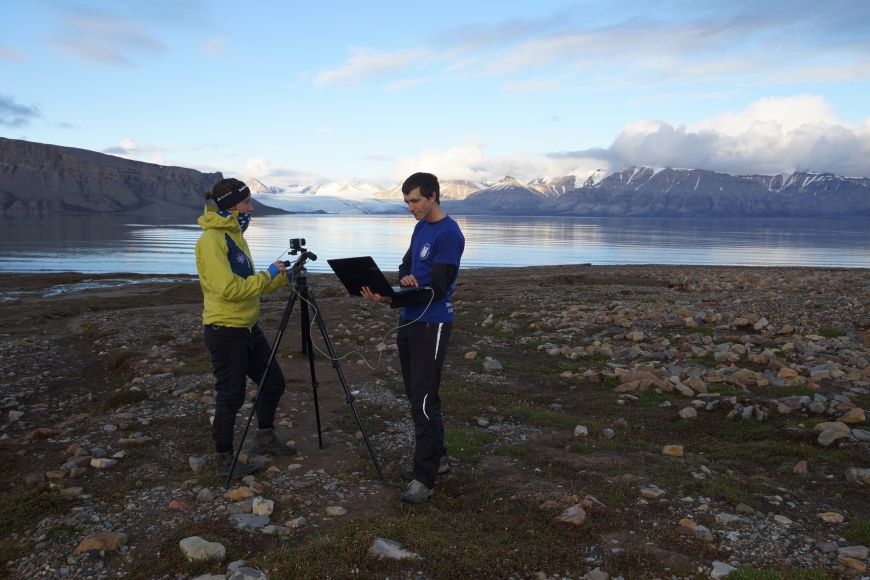Instruction at the Faculty of Science need not always take place only in classrooms and laboratories. Selected students can go for a two-weak research trip to Svalbard in the summer. Martin Svatoň, a geography student who deals with climatology, was one of the students to go there last year.
He successfully passed a selection procedure for the Course of polar ecology organized by the Department of Geography at Masaryk University and the Centre for Polar Ecology at the University of South Bohemia, which has a polar station on Svalbard.
The course consists of two parts. In the first half of May, participants go to a one-week preparatory course to České Budějovice, where they learn in detail how polar geo- and ecosystems work. The field part takes place on Svalbard. Six groups of scientists take turns in the polar station in July and August. Geologists, climatologists, hydrologists but also botanists, zoologists or microbiologists will carry out their research there. In September they will take the final exam of the course.
“I was gathering data for my Bachelor's thesis on Svalbard," Martin explains. “Using a thermal camera I examined surface temperatures in various localities as part of microclimatic research," he adds.

In addition, he and other climatologists took care of the maintenance of meteorological stations which in long term monitor climate changes on the archipelago. Meteorological stations are strewn over a large area, so sometimes we would spend half of a polar day walking in hard terrain – due to harsh weather, Svalbard has a rocky and cracked surface and also lots of rivers, which we sometimes had to ford.
Within glaciology research they measured changes in the volume of glaciers. “We measured their exact location using GPS so that it is clear in the future how much they retreated towards the valley. We also looked for rods inserted into the glacier by the previous group. We did not find a number of them, so we suppose that the glacier lowered by more than two meters during the two years," the student says.
They also tried themselves how difficult it is to insert new rods into the glacier. Sometimes the drilling worked out only on the third time because they suddenly hit a rock in 2-meter depth. “Valley glaciers are full of rocks in the bottom part. They are not the traditional bluish pieces of ice with a white cap as many people imagine it," Martin points out.
The aim of the course is to understand the entire system as a whole, not only one's discipline. “Overlaps to interdisciplinary topics were very interesting, many things got linked in my mind. The course made me realize how big a role in glacier melting is played by algae. When glaciers start melting, fresh water is released in them and algae start growing in it. They are dark, so they absorb more sunshine, which only speeds up the melting process," Martin explains.
To make the experience complete, it is not possible to omit the bears. Approximately three thousand people and allegedly the same number of bears live on Svalbard. Most of them are in the Northern and Eastern islands and the polar station is located in the Western part but even that they were visited by a polar bear on the station.
“After arrival in Svalbard we went through a safety and shooting course in case we actually meet a bear. But you can only shoot them in self-defence, otherwise there is a huge fine and a lifetime ban on entry," the student says.
The group therefore had to wait until the bear leaves. However, another group found itself in greater danger, they almost met a polar bear directly in the field. But colleagues from a Polish station located nearby warned them by a radio, so they went around the bear. Nevertheless, a Czech who went to Svalbard in March to observe the eclipse of the Sun was not so lucky – he was slightly injured by a bear.
